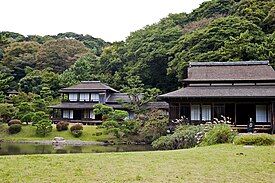Type a search term to find related articles by LIMS subject matter experts gathered from the most trusted and dynamic collaboration tools in the laboratory informatics industry.

An Important Cultural Property (重要文化財, jūyō bunkazai)[note 1] is an item officially classified as Tangible Cultural Property by the Japanese government's Agency for Cultural Affairs (Ministry of Education, Culture, Sports, Science and Technology) and judged to be of particular importance to the history, arts, and culture of the Japanese people.[1]
To protect the cultural heritage of Japan, the Law for the Protection of Cultural Properties was created as a "designation system" (指定制度) under which important items are appropriated as Cultural Properties,[note 2] thus imposing restrictions to their alteration, repair and export.[1] Besides the "designation system", there exists a "registration system" (登録制度), which guarantees a lower level of protection and support to Registered Cultural Properties.
Cultural Properties are classified according to their nature. Items designated as Tangible Cultural Properties (as opposed to Intangible Cultural Properties), cultural products of high historical or artistic value such as structures, paintings, sculptures, handicrafts, calligraphic works, ancient books, historic documents, archeological artifacts and other such items, can later, if they satisfy certain criteria, be designated either Important Cultural Properties or National Treasures (国宝), for especially valuable items. The designation can take place at the city (市定重要文化財, city designated Important Cultural Property), prefectural (県定重要文化財, prefecturally designated Important Cultural Property) or national (国定重要文化財, nationally designated Important Cultural Property) level. In this last case the designating agency is often not specified. Varying levels of designation can coexist. For example, Sankei-en, a traditional Japanese-style garden in Naka Ward, Yokohama, is both city and nationally designated as an Important Cultural Properties.[2]